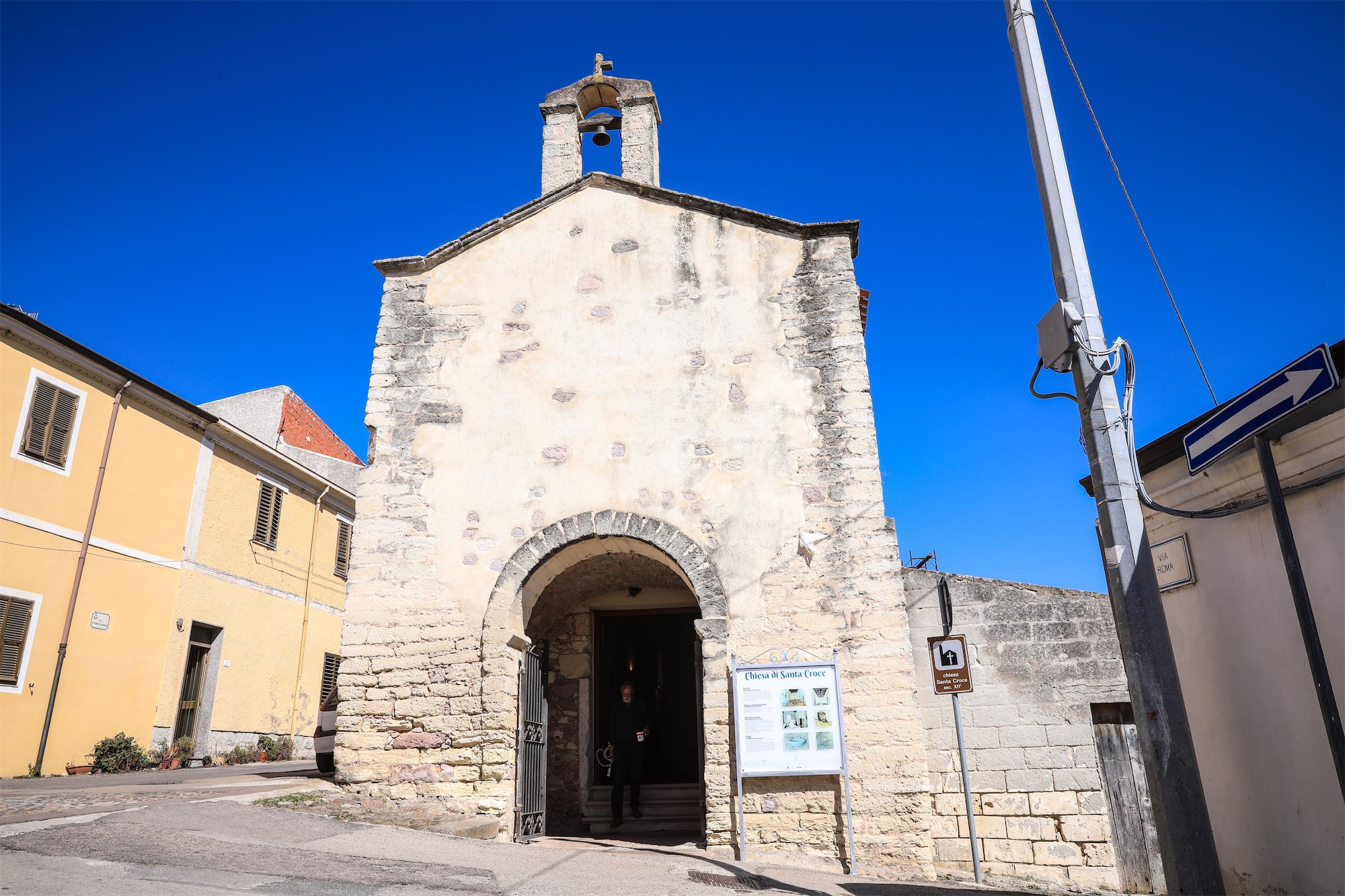
Uri
Church of the Holy Cross
The Church of the Holy Cross is located in via Vittorio Emanuele and is part of the scenery in via Roma, also called Carrel ‘e Santa Rughe (tn* Holy Cross Street, in Sardinian). The first reference to the church of the Holy Cross is found in the Condaghe of Saint Peter in Silki, along with a mention of the old village of Uri (a Condaghe is a monastic document dating back to the age of the Sardinian Judgedoms or Judicatures, which were independent governments in power in Sardinia from the 9th to the 15th centuries AD). Eventually, the name of the church was changed to the Blessed Virgin Mary and it became the parish church until the beginning of the 15th century, when it was substituted by the church of Our Lady of Patience. Towards the end of the 15th century, the Confraternity of the Holy Cross transferred its headquarters to the church of the Holy Cross, giving it new splendour. The Confraternity worked on the first renovation of the building. There are many documents attesting this, dating back to the 17th century. Between 1791 and 1800 a particular barrel vault was added to the structure, called “Sardinian arch”. In circa 1840, the church, which had been deconsecrated, was used as a classroom for the first elementary school. After the Union of Italy, it changed use again, becoming a polling station. During World War II and with the dissolution of the Confraternity, the structure started a phase of decline: used first as a military camp, after WWII it became a movie theatre for the parish cinema. After a few years, the vault collapsed and the building was definitely abandoned. At the moment, it has a gabled façade, surmounted by a bell gable. The plan of the building has a single nave with access to a small room above where the choir is located. Along the right side, there are two small chapels with barrel vaults. The roof is made of wood, as is that of the nave. During renovation works, part of the cloister vault was brought to light. Through observation of the wall surface, it is possible to date its construction to the first half of the 12th century. The Romanesque church was smaller, as shown by the limestone ashlars, visible near the entrance and the altar. The church probably had a trussed roof (as demonstrated by the last renovation works that revealed the holes for the wooden crossbeams), which was later substituted by a barrel vault. The first enlargements date back to the 16th century, when the central nave was extended and the apse and façade were knocked down. The building of the two chapels located on the left might date back to this period. A work contract of 1798 attests the implementation of intervention work on the external wall surfaces and the modification of the space and vault of the sacristy. Around the end of the 1940s, the buttresses and chapels to the left were knocked down to make space for the road, causing the vault to collapse. Today, the interior of the church is furnished with essential elements and it is possible to see three chapels, recently restored and decorated with bright coloured stuccoes. From the gallery above the entrance, accessible via a steep staircase, it is possible to admire the view of the entire nave and observe the construction details of the trussed vault. At the moment, the church of the Holy Cross is used to officiate rituals and can be visited by booking an appointment through the Confraternity.
Source: pdf record of the Town Council, https://chiesedisardegna.weebly.com, brochure in the Town Library (in Italian)



